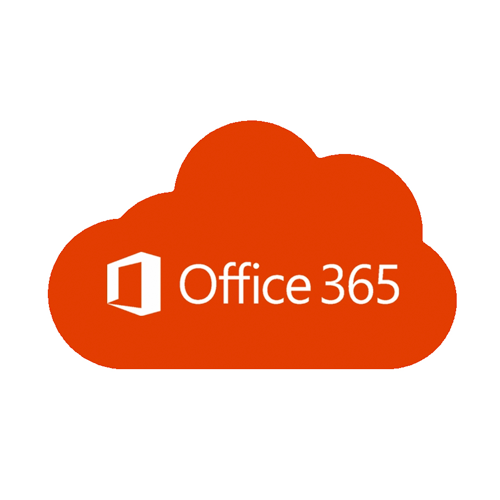Complete Guide and Comparison: Windows 10 OEM, Retail, and Volume Licenses
When purchasing a Windows 10 license, you’ll encounter three main types: OEM, Retail, and Volume Licensing. Each has its distinct advantages and limitations depending on your needs, be it for personal, small business, or large organizational use. This guide will break down the differences between OEM licenses, Retail licenses, and Volume licenses, helping you understand which one is right for you.
Contents
1. Windows 10 OEM License
What Is an OEM License?
An OEM (Original Equipment Manufacturer) license is typically pre-installed on new PCs, such as laptops and desktops sold by manufacturers like Dell, HP, and Lenovo. It can also be purchased by individuals building their own computers.
Key Features of OEM Licenses:
- Non-Transferable: An OEM license is tied to the first machine it’s installed on and cannot be transferred to another computer. If the motherboard is changed, the license is no longer valid, meaning you’ll need to buy a new license.
- Single Activation: OEM licenses can only be activated once, on one device.
- Lower Cost: OEM licenses are generally less expensive than retail or volume licenses, making them a budget-friendly option for personal use or single PC setups.
- No Microsoft Support: Support is provided by the device manufacturer or builder rather than Microsoft, which may limit access to official troubleshooting and assistance.
Pros of OEM License:
- Cost-effective: OEM licenses are significantly cheaper than retail and volume licenses.
- Pre-installed on new PCs: If you purchase a new PC, it often comes with an OEM version of Windows pre-installed, saving you the hassle of installation.
Cons of OEM License:
- Locked to one machine: Once installed, the OEM license is tied to that specific hardware configuration. You cannot transfer it to another device or reuse it after a major hardware upgrade (such as changing the motherboard).
- No Microsoft direct support: OEM users must rely on their PC manufacturer for support, which can be limiting.
Best For:
- Personal Use: Individuals who are building a custom PC and don’t plan to change hardware often.
- Budget-Conscious Users: If you need a cost-effective solution and don’t need the flexibility to transfer the license.
2. Windows 10 Retail License
What Is a Retail License?
A Retail License can be purchased from Microsoft directly or from authorized resellers. This is the standard license option for individual users who need flexibility with their Windows installation.
Key Features of Retail Licenses:
- Transferable: Retail licenses can be moved to different computers. If you upgrade your hardware or buy a new PC, you can deactivate the license on the old device and activate it on the new one.
- Multiple Activations: Although it can only be active on one device at a time, you can install and activate the retail license on different computers multiple times.
- Full Microsoft Support: You receive direct support from Microsoft, which includes troubleshooting, updates, and issue resolution.
Pros of Retail License:
- Flexibility: Retail licenses can be transferred to new machines, making them ideal for users who frequently upgrade their PCs.
- Support: Retail users get full Microsoft support for troubleshooting and technical issues.
- Single Activation Key: You receive a unique activation key that can be reused on different devices, as long as it is only active on one machine at a time.
Cons of Retail License:
- Higher Cost: Retail licenses are more expensive than OEM licenses, which may not be ideal for those on a tight budget.
Best For:
- Frequent Upgraders: Users who frequently upgrade or change hardware and need a license that can transfer with their new system.
- Full Support: Those who need direct support from Microsoft for troubleshooting or system issues.
3. Windows 10 Volume Licensing
What Is Volume Licensing?
Volume Licensing is designed for businesses, schools, and large organizations that need to install Windows on multiple devices. Instead of purchasing a separate license for each machine, Volume Licensing allows companies to buy one key that can activate multiple installations.
Key Features of Volume Licensing:
- Multiple Activations: A single volume license can be used to activate Windows on numerous computers, making it ideal for organizations with large deployments.
- Centralized Management: Volume Licensing provides tools for centralized management, making it easier for IT departments to manage, update, and deploy Windows across many devices.
- Flexible Activation: Activation methods include Key Management Service (KMS) or Multiple Activation Key (MAK), giving businesses flexibility in how they activate Windows across their systems.
- Access to Enterprise Features: Volume licenses often come with advanced Windows features, such as Windows 10 Enterprise, which includes additional security and management tools for corporate environments.
Types of Volume Licensing:
- KMS (Key Management Service): KMS allows you to activate multiple devices via your local network without contacting Microsoft for each activation. It’s ideal for larger organizations.
- MAK (Multiple Activation Key): MAK keys are used to activate a predetermined number of machines by communicating directly with Microsoft. Once the limit is reached, additional activations require purchasing more licenses.
Pros of Volume Licensing:
- Cost Savings: Volume licenses offer significant cost savings for businesses that need to install Windows on multiple machines.
- Centralized Control: IT administrators have centralized control over deployments, updates, and activations.
- Enterprise Features: Volume licenses can include access to Windows 10 Enterprise, which offers additional security, management, and virtualization features.
Cons of Volume Licensing:
- Complex Setup: Volume licensing setup can be complex, especially for smaller businesses without dedicated IT teams.
- Not for Individual Users: Volume licenses are not intended for personal use or individual users, as they are geared toward organizations.
Best For:
- Businesses: Companies with large numbers of PCs and employees who need to manage multiple installations efficiently.
- Educational Institutions: Schools and universities looking to deploy Windows across many devices at a lower cost.
- Organizations with IT Teams: Firms that have dedicated IT staff to handle the complexities of managing volume licenses.
Comparison Table: OEM vs. Retail vs. Volume Licensing
| Feature | OEM License | Retail License | Volume Licensing |
|---|---|---|---|
| Cost | Lower cost | Higher cost | Cost-effective for multiple machines |
| Transferable | No | Yes, transferable between devices | Yes, for multiple devices |
| Support | Provided by manufacturer | Full Microsoft support | Managed by organization |
| Hardware Changes | Not allowed (license tied to original hardware) | Allowed (can be transferred) | Centralized management for hardware |
| Use Case | Personal or small business PC | Personal, small business users who upgrade frequently | Large businesses, schools, enterprises |
| Multiple Devices | One machine only | One machine at a time | Multiple machines with single key |
| Access to Enterprise Features | No | No | Yes, with certain licenses like Windows 10 Enterprise |
| License Activation | Single activation on one device | Can be deactivated and reused on different devices | Flexible (KMS, MAK) |
Which License Should You Choose?
Choose an OEM License If:
- You are building a single PC and don’t plan on upgrading hardware in the near future.
- You’re looking for a cost-effective option and don’t need the flexibility of transferring the license to another computer.
- You don’t require direct support from Microsoft.
Choose a Retail License If:
- You frequently upgrade or change your hardware and need the flexibility to transfer your Windows license.
- You want full support from Microsoft, including updates and troubleshooting assistance.
- You prefer the convenience of having one license that can be activated on multiple devices, though only one at a time.
Choose a Volume License If:
- You are part of a business, school, or organization with multiple PCs that need Windows installed.
- You need to manage large-scale deployments with centralized control.
- You require advanced features available in Windows 10 Enterprise or other specialized versions of Windows.
Conclusion
Choosing between OEM, Retail, and Volume Licensing for Windows 10 depends largely on your specific use case. If you’re a home user or small business building a single machine, OEM licenses provide a cost-effective solution. For users who plan to upgrade hardware frequently or require full Microsoft support, Retail licenses offer flexibility. Businesses and organizations with large deployments should look into Volume Licensing, which allows for centralized control and management of multiple devices, with advanced features for corporate environments.
Each license type serves a different purpose, so carefully consider your needs before making a purchase to ensure you get the best value and functionality for your situation.



 Windows 11
Windows 11 Windows 10
Windows 10 Windows 8
Windows 8 Windows 7
Windows 7 Windows XP
Windows XP
 Microsoft 365
Microsoft 365 Office 2019
Office 2019 Office 2013
Office 2013 Office 2010
Office 2010 Project 2021
Project 2021 Project 2019
Project 2019 Project 2016
Project 2016 Visio 2021
Visio 2021 Visio 2019
Visio 2019 Visio 2016
Visio 2016
 Server 2008
Server 2008 SQL Server
SQL Server
 Avast
Avast Utility & Tools
Utility & Tools PDF Editor
PDF Editor CAD & 3D, 2D
CAD & 3D, 2D Graphics/Drawing
Graphics/Drawing Microsoft 365
Microsoft 365 Office 2021
Office 2021 Office 2019
Office 2019 Office 2013
Office 2013 Office 2010
Office 2010 Server
Server
